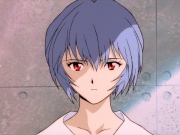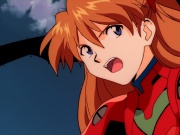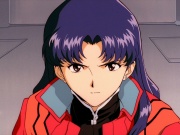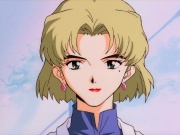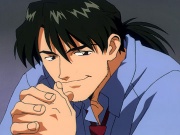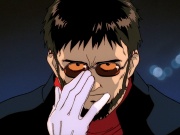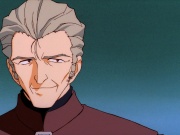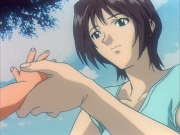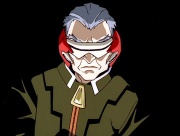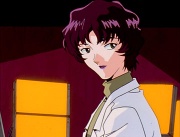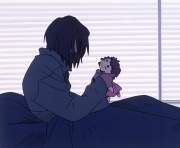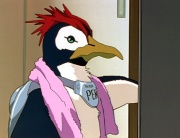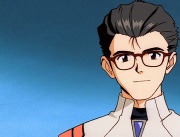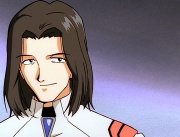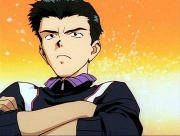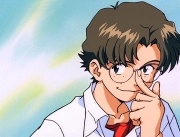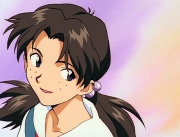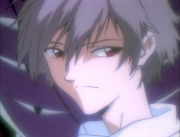Character Name Origins
When Hideaki Anno created Neon Genesis Evangelion, he borrowed from everywhere, which is more than evident in the way the characters were named. In the essay section of his personal website, he revealed most of the secrets for fans who have a ravenous thirst for such tidbits. Fortunately for those who can't read Japanese, “massangeana” did a rough translation and posted it on the newsgroup Japan.Anime.Evangelion in December of 2000. Presented here is a slightly tweaked version, supplemented by Japanese characters and some additional information. Notes by massangeana are this color; notes added for this page (mostly taken from info provided by MDWigs) are this color.
11/02/2000 (Entry 1)
Sorry to trouble you with such an old story now, but I'm going to go a little into the creation of the Eva character's names. In the first volume of Sadamoto's manga, I touched a bit upon a few of the Eva character's names and how they take shape according to my so-called rule. A little more about how I created them below.
| 碇シンジ | Ikari (anchor) is a component of a ship. It's also borrowed from the name of a friend from my college years. Shinji is also borrowed from a long-time friend (Shinji Higuchi). Incidentally, since both his wife and daughter's names have been used for anime protagonists, I wanted to do the same for the husband and make them an anime family -- but, that said, my reasoning wasn't too logical. Sorry, Shin-chan.
*Higuchi's given name is written 真嗣. Perhaps if Anno had not opted to write the NGE characters' given names in katakana, Shinji's would have been written like this, as well. |
| 綾波レイ | Ayanami is from a warship of the former Japanese navy. Rei is just a pun of rei 零 (zero)
, but actually named after Rei Hino of Sailor Moon (by Naoko Takeuchi). At the time, this was a bait to invite Iku-chan (Kunihiko Ikuhara) to the staff, but he ran away. Too bad. *Rei's name is a pun about the Japanese “Zero” fighters. It's likely not an accident that Rei pilots EVA-00 (零号機)? ;;> |
| 惣流・アスカ・ラングレー | Soryu is from a warship of the former Japan navy (different kanji); Langley is from the US navy warship. Asuka is borrowed from Shinji Wada's manga heroine <(Chou-Shoujo Asuka).
|
| 葛城ミサト | Katsuragi is from a warship of the former Japanese navy. Misato is borrowed from a heroine of Minako Narita's manga (Misato Izumi of Aitsu).
*The given name of Narita's heroine is written みさと. |
| 赤木リツコ | Akagi is from a warship of the former Japanese navy. Ritsuko is borrowed from a friend of mine in middle school. |
| 加持リョウジ | Kaji (rudder) is a component of a ship. Ryoji is also from a hero in Minako Narita's manga (Ryoji Sawada of Aitsu).
|
11/13/2000 (Entry 4)
| 碇ゲンドウ | Ikari is the same as with Shinji. Gendo is borrowed from another anime project before Eva that was aborted. I didn't notice Gendo and Shinji is the same combination as in Ken Ishikawa's manga until one of my friends pointed it out. (I think he means Shin'ichi Kuruma and Genzo Kuruma of Majuu Sensen.) His former name Rokubungi 六文儀 (sextant) is also a component of a ship. Just FYI, Rei Asuka of Raideen is also a coincidence. I didn't do this knowingly, as until Super Robot Taisen was made, I had completely forgotten that Raideen existed. Sad, I know. |
| 冬月コウゾウ | Fuyutsuki is from a warship of the former Japan navy. Kozo just has a nice ring to it. |
| 碇ユイ | Ikari is the same as before. Yui sounds similar to Rei, and it's also a simple pun on yui 唯 (only one).
|
| キール・ローレンツ | Keel is also a component of a ship. Lorenz is named after a zoologist or something, but I can't remember clearly. Am I just getting old? Oh, well.
|
| 赤木ナオコ | Akagi is the same as with Ritsuko. Naoko is from a friend of mine when I was in elementary school. |
| 流・キョウコ・ツェッペリン | Soryu is from the same Japanese warship as Asuka. Kyoko is also from a character in Shinji Wada's manga. Zeppelin is from a warship of the German navy that was envisioned but never made. |
| ペンペン | Super straightforward naming, but I thought the repetition sounded cute. His name has officially become the 2nd power of Pen (Pen²). I was reluctant at first, but we thought we needed a mascot character, so we had an animal appear in the show. As it happened, the show is set in Hakone, which one associates with hot springs, which in turn are associated with monkeys. But that is no fun, so we decided to make it a penguin, the animal most unsuited to a hot spring. I'm positive that "hot spring penguin" was Sadamoto's idea.
|
11/17/2000 (Entry 6)
| 日向マコト | Hyuga is from a warship of the former Japanese navy. But what was Makoto? I don't remember. Maybe because I liked Ryou(taro) Shiba's Shinsen-gumi? Sorry, I'm not sure about this one either. |
| 青葉シゲル | Aoba is from a warship of the former Japanese navy. Shigeru is a spoof of the movie title Aoba Shigereru directed by Kihachi Okamoto.
|
| 伊吹マヤ | Both Ibuki and Maya are borrowed from warships of the former Japanese navy because they sounded good. Ibuki is also a commanding officer in Kaette kita Ultraman whom I like, but that's a very minor reason. I chose Maya (摩哉) because I love Takao-class heavy cruisers best after Yamato-class battleships. |
| 鈴原トウジ | Borrowed unchanged from a Ryu Murakami novel I read on my friend's recommendation.
|
| 相田ケンスケ | Also from Murakami's novel. BTW, I was just interested in a character “Zero” in this novel, rather than the story about revolution and dictatorship itself.
|
| 洞木ヒカリ | Horaki also comes from Murakami's novel. Hikari, her older sister Nozomi, and her younger sister Kodama are borrowed from Tokaido Shinkansen express train names.
|
| 渚カヲル | This character was named by the screenplay writer Akio Satsukawa. Nagisa [shore] is a word related to the sea. Also the kanji nagisa 渚 consists of katakana SHI シ and kanji SHA 者, therefore he's SHISHA シ者 [messenger 使者]. He said it also comes from the movie director Nagisa Oshima. But what is Kaworu? Sorry, I will ask him next time.
|
(Shiro) Tokita (時田), Manda (万田), and Yasugi (八杉) of episode #07 also come from Murakami's novel. Nozoku Takahashi (高橋覗) of episode #11 comes from the name of a production manager and my friend. It's a staff in-joke. (Takahashi Nozomu of Studio Ghibli. Actually, Ghibli did animation work for this episode.) The names of characters in episode #15, etc., also follow a hidden convention. Guessing the rule might be fun if you have the time.

